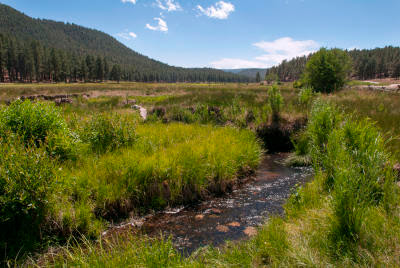Description and Ecology: The
blue whale, also known as Balaenoptera musculus, is a species of baleen whale.
It is the largest animal ever known to have lived on earth. Adult blue whales
have been recorded up to 33 meters long and weighing up to 150,000 Kg. An
interesting fact is that the female whales are larger than the males! Blue
whales have a long slender body and their dorsal fin sits farther back than
most other whales.
When a blue whale feeds, its throat and chest greatly
expand to allow a massive intake of seawater. They eat zooplankton by taking in
large amounts of water and filtering out the plankton through baleen. Baleen
acts as a barrier that the plankton cannot pass as the whale expells water from
its mouth.
Blue whales have a gestation period
that lasts between 10 and 12 months. Once the calves are born, they are nursed
for 6-7 months. The young are typically weaned during their migration north for
the summer season. Once weaned, the whale will continue migrating on its own.
Blue whales have a single offspring every 2-3 years. The age of sexual
maturation is not known exactly, but it has been narrowed to between 5 and 15
years of age.
Geographic and Population
Changes: Blue whales inhabit most of the
world’s oceans but are most commonly found in the North Atlantic and North
Pacific. During the summer they will be found in the northern part of the
oceans to feed and during the winter they will be found in the southern parts
for breeding. It is believed that they breed in the south because the young
only have a thin layer of blubber to retain heat.
There are no valid population totals,
but the closest estimates available indicate that there were 15,000 in the
North Atlantic and 6,000 in the North Pacific before whaling became popular. In
the North Atlantic alone, there have been an estimated 11,000 captures from
whaling since the 19th century. Currently it is believed that there are less than 5,000 worldwide.
Blue Whale Sighting
Listing: Blue whales were listed as an endangered species on June 2nd,
1970. The main cause for their listing was the excessive and unsustainable
hunting of blue whales. Whaling for blue whales has been made illegal, but the
problem isn’t solved. Pirate whalers that do not follow fishing regulations continue
to hunt for blue whales. Blue whales can also be struck by a ship or become
trapped in fishing gear. We know where these incidents most commonly occur, but
research on how to prevent them is ongoing. (More information can be found here)
Recovery Plan: The recovery plan for blue whales was put into effect on
July 28th, 1998. The plan’s long term goal is to promote the
recovery of blue whales until it is considered appropriate to list them as
threatened, and to eventually be removed from the list. The purpose of this
recovery plan is to identify necessary actions to minimize or eliminate the
effects of human activities that set back the recovery of blue whales. The
immediate objective is to identify what limits the population and to find out what
is necessary to increase the population. The highest priority currently is to “support
the international ban on commerical hunting and encourage international efforts
to eradicate illegal whaling”(Reeves et al). Other notable points to this plan are to eliminate
human caused mortality and to maximize scientific info gathered from stranded
or entangled blue whales.
How Can YOU Help? There is nothing that an individual can do to help a blue whale, but by donating here you can support the Word Wildlife Fund's efforts.
Works Cited:
Reeves, Randal, Phillip Clapham, Robert Brownell, Gregory
Silber. “Recovery Plan for the Blue Whale.” Office of Protected Resources,
National Marine Fisheries Service, National Oceanic and Atmospherc
Administration. July 1998
World Wildlife Fund. “Blue Whale.” World Wildlife website: http://www.worldwildlife.org/species/blue-whale
(Accessed December 4, 2015)












